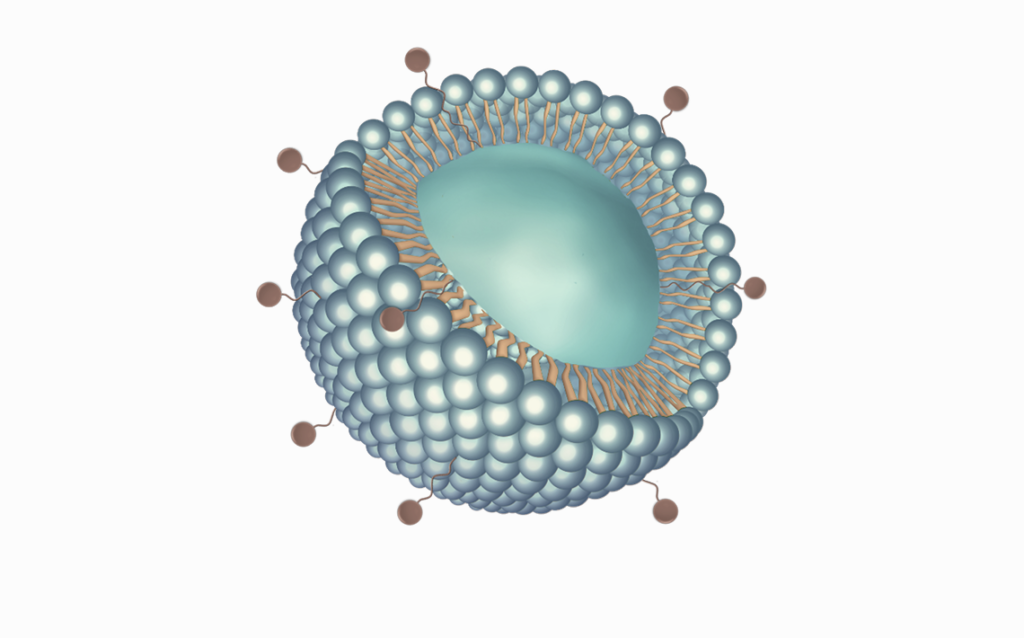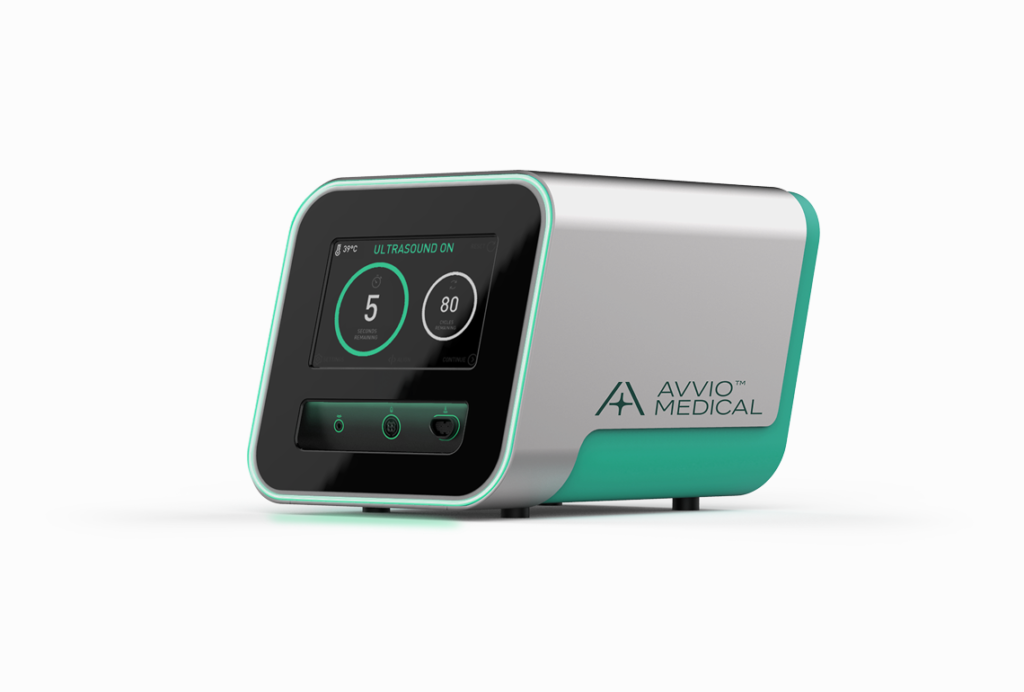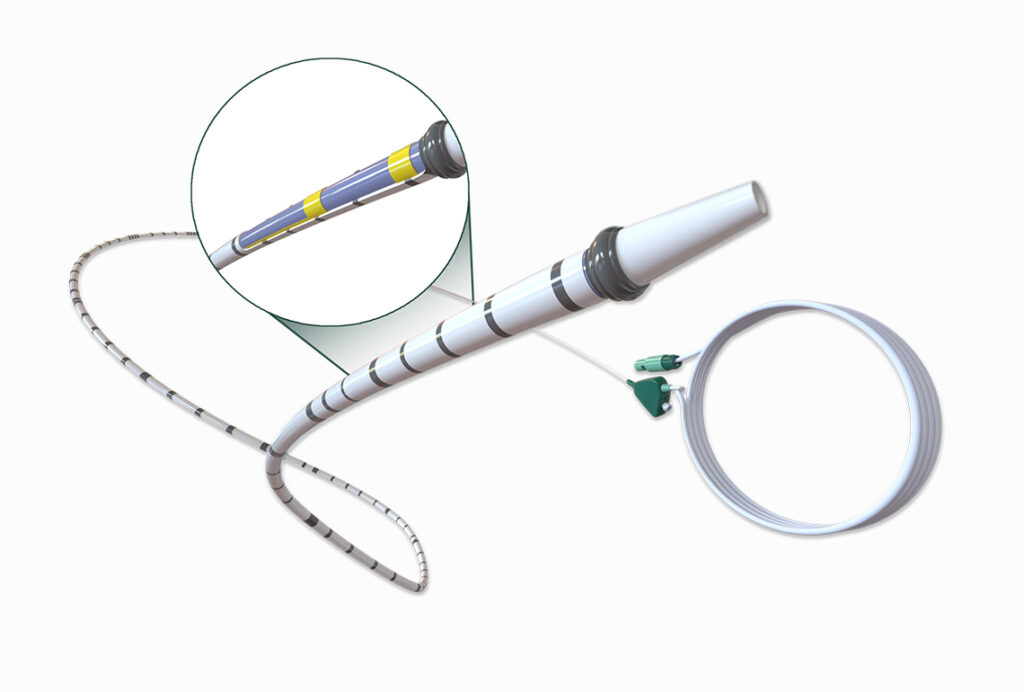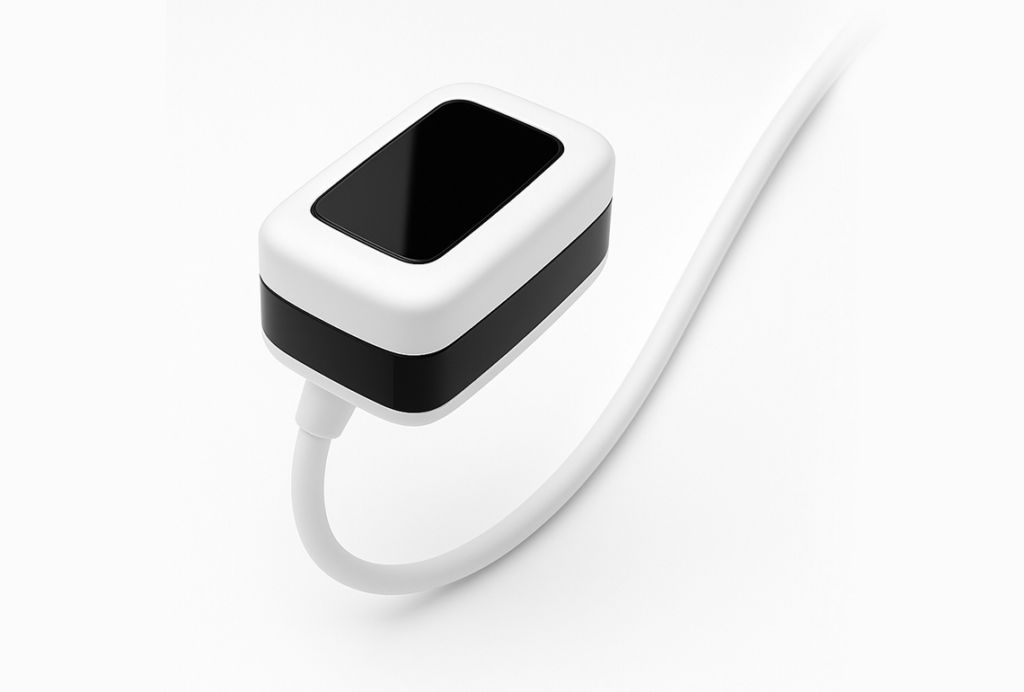AVVIO Enhanced Lithotripsy System
Advanced Stone Comminution Technology
Our innovative technology combines microbubble-enhanced acoustic cavitation with smart catheter navigation to precisely target and break down ureteral stones, all without the need for imaging or general anesthesia.

A New Era in Ureteral Stone Treatment
Our innovative ureteral stone treatment system combines several cutting-edge technologies to offer a more efficient alternative to traditional methods. At the heart of the system is microbubble-enhanced acoustic cavitation, which uses acoustic energy to break down ureteral stones with minimal force, unlike the more traumatic shock waves used in conventional treatments.
The system features a patented bisphosphonate ligand attachment to lipid microbubbles, enhancing the fragmentation process. A smart ureteral catheter, responsive to acoustic signals, enables precise real-time navigation within the ureter, eliminating the need for intraoperative imaging or fluoroscopy.
This system advances kidney stone treatment by offering a faster and more accessible solution, improving outcomes and expanding access to care.
Key Benefits
Minimally Invasive
No routine general anesthesia required, reducing patient discomfort and risks.
Simplified Procedures
Eliminates the need for imaging during the procedure, making it possible to treat ureteral stones in more accessible settings.
Improved Access & Equity
Reduces treatment costs and increases availability in underserved areas.
Faster Recovery
Fewer pre- and post-operative stents, lowering complication rates and recovery time.
System Components
Enhanced Lithotripsy System delivers low-pressure acoustic beam that energizes the Acoustic Enhancer Microbubbles causing cavitation progressively eroding, pitting and fragmenting the target stone. It is comprised of a Console, a Treatment Head, Smart Ureteral Catheter and Acoustic Enhancer Microbubbles.

1. Acoustic Enhancer Microbubbles
At the core of our system is the use of Microbubble-enhanced acoustic cavitation, which leverages acoustic energy to fragment ureteral stones with precision. This method uses lipid microbubbles, each with bisphosphonate ligands attachment—a patented technology that enhances the cavitation process for more efficient and controlled stone fragmentation. Unlike traditional shock wave therapy, which uses high-pressure waves, our system delivers energy that is marginally higher than diagnostic ultrasound, potentially reducing trauma to surrounding tissues.
Calcium-seeking Microbubbles are activated by the system’s low-pressure ultrasound, creating millions of micro-jets that help break down stones.

2. ELS Console
The ELS Console is the heart of the system, providing clinicians with real-time oversight and intuitive control of all components. It seamlessly integrates with the microbubble actuation and the smart ureteral catheter, allowing the operator to monitor the procedure and make adjustments as necessary. The console features an easy-to-use interface that displays real-time feedback on catheter positioning and stone treatment progress.
The Console enables precise management of the procedure, enhancing clinician confidence and efficiency. It also streamlines the workflow by consolidating all controls into one device, reducing the need for multiple machines or complex setups.

3. Smart Ureteral Catheter
The smart ureteral catheter is equipped with acoustic sensors that detect the energy waves in real-time. This allows the catheter to respond to acoustic signals and self-locate within the ureter, providing precise navigation without the need for intraoperative imaging or fluoroscopy. This advanced technology ensures that the catheter is always in the correct position, enhancing the accuracy of the treatment.
The smart catheter eliminates the need for imaging during the procedure, making it possible to perform the treatment in more accessible settings and simplifying the workflow for clinicians.

4. Treatment Head
The Treatment Head is an ultrasound transducer designed to emit a beam of low-intensity ultrasound to the ureteral stone, while maintaining alignment with the ureteral catheter.
The reduced acoustic pressure minimizes the need for general anesthesia, offering a less painful, less invasive treatment with a faster recovery time.
CAUTION – Investigational device. Limited by Federal (or United States) law to investigational use. Avvio Medical, Inc. does not currently offer medical devices for sale or distribution and the company’s technology has not received market clearance status by the U.S. FDA or any other country’s regulatory authority.
MKT-006 Revision O, April 2025.